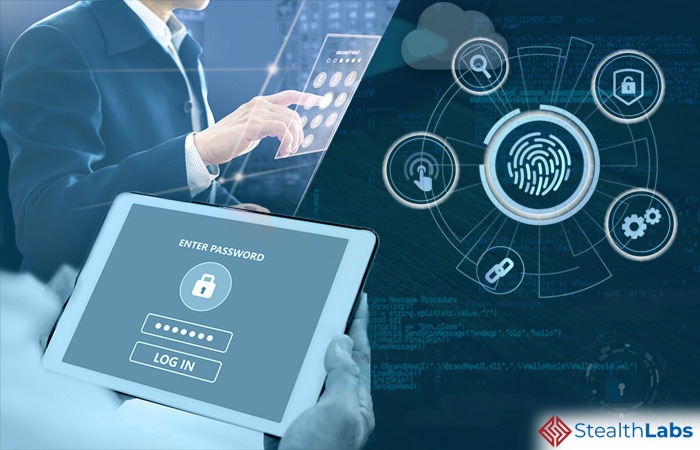In the fast-paced and interconnected digital landscape, safeguarding sensitive information and ensuring secure access to resources has become a top priority for businesses. Enter Identity and Access Management (IAM) services, a comprehensive solution that not only fortifies cybersecurity but also streamlines user experiences.
In this blog, we will embark on a journey to explore the intricacies of IAM services, uncovering their significance, core functionalities, implementation strategies, and the pivotal role they play in today’s dynamic business environment.
IAM identity and access management is a robust framework that revolves around the management of digital identities and the control of access to various resources within an organization. It encompasses a range of technologies, policies, and processes designed to ensure that the right individuals have access to the right resources at the right time, while also preventing unauthorized access.
In an era marked by digital transformation and an ever-expanding threat landscape, IAM has emerged as a linchpin in maintaining the integrity and security of an organization’s digital assets. The scope of IAM extends beyond traditional on-premises environments to include cloud services, mobile applications, and other digital platforms, reflecting the evolving nature of business operations.
Core Functionalities of IAM Services:
Identity Lifecycle Management:
IAM services facilitate the complete lifecycle management of user identities. This includes provisioning user accounts, managing changes in roles or permissions, and de-provisioning accounts when users no longer require access. This systematic approach ensures that access rights align with the user’s current status and responsibilities within the organization.
Authentication and Authorization:
IAM services play a pivotal role in authentication and authorization processes. Authentication verifies the identity of users, typically through methods like passwords, multi-factor authentication, or biometrics. Authorization, on the other hand, defines the level of access granted to authenticated users, ensuring that individuals only access resources relevant to their roles.
Single Sign-On (SSO):
SSO is a hallmark feature of IAM services, streamlining user experiences by allowing them to access multiple applications or services with a single set of credentials. This not only enhances user convenience but also strengthens security by reducing the need for users to manage multiple sets of login credentials.
Implementation Strategies for Effective IAM:
Prior to implementing IAM services, organizations should conduct a comprehensive risk assessment to identify potential vulnerabilities and threats. Understanding the unique risks associated with the organization’s infrastructure and industry landscape is crucial for tailoring IAM solutions to address specific needs.
Effective IAM implementation involves seamless integration with existing systems, applications, and databases. Ensuring compatibility with the organization’s technological ecosystem enables a smooth transition and minimizes disruptions to daily operations.
IAM success hinges on user cooperation and understanding. Organizations should invest in educating users about the importance of IAM practices, including secure password management, recognizing phishing attempts, and adhering to security protocols. Well-informed users are key contributors to a robust IAM framework.
IAM in Cloud Environments:
As organizations increasingly migrate to cloud environments, IAM assumes a central role in securing access to cloud-based resources. IAM solutions are designed to provide a unified approach to managing identities and access across on-premises and cloud infrastructures, ensuring consistent security policies.
IAM services in the cloud offer scalability and flexibility, accommodating the dynamic nature of modern business operations. Whether scaling up due to business growth or adapting to changing user roles, cloud-based IAM solutions provide the agility needed to meet evolving organizational requirements.
The Role of IAM in Regulatory Compliance:
IAM services play a critical role in helping organizations meet regulatory compliance standards. Whether it’s GDPR, HIPAA, or industry-specific regulations, IAM ensures that access controls and user permissions align with the stipulated requirements, safeguarding sensitive data and avoiding legal ramifications.
IAM solutions provide robust audit trails and reporting mechanisms. This capability enables organizations to generate detailed reports on user activities, access requests, and system changes, facilitating compliance audits and ensuring transparency in access management practices.
Emerging Trends in IAM Services:
The Zero Trust security model, which operates under the assumption of no implicit trust, is gaining prominence in IAM strategies. IAM services are aligning with the principles of Zero Trust, emphasizing continuous verification of user identities and the dynamic evaluation of access permissions.
Advancements in biometric authentication, including facial recognition and fingerprint scanning, are influencing IAM services. These technologies enhance the accuracy and security of user authentication, reducing reliance on traditional password-based methods.
Conclusion:
In the digital age, where information is a valuable asset and cyber threats are ever-present, Identity and Access Management services stand as guardians of organizational integrity. By intricately managing digital identities and access controls, IAM not only fortifies cybersecurity but also empowers organizations to navigate the complex digital landscape with confidence.
As we conclude this exploration, it’s evident that IAM is not merely a technology but a strategic imperative, an integral part of an organization’s commitment to security, compliance, and seamless user experiences. As businesses continue to evolve, IAM will remain at the forefront, adapting and innovating to meet the challenges of tomorrow’s dynamic digital frontier.



